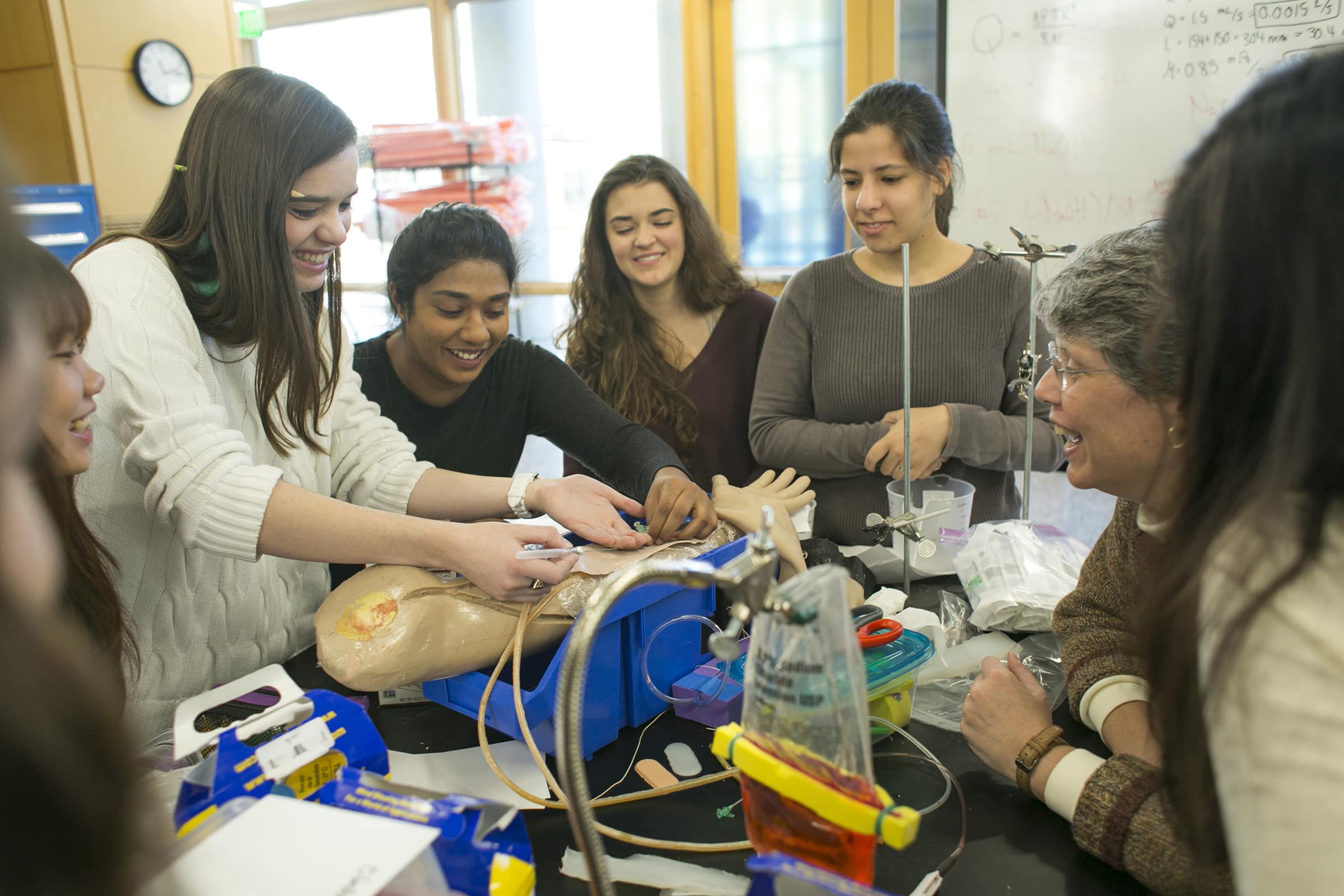Our Story
Engineering Excellence in Service to Society
Duke’s Pratt School of Engineering is a community that defines excellence in engineering education, research and service to society.

A Leader in Engineering Education
The rigorous engineering education we provide to students at all stages of their lives is the center of who we are as an institution.
Our signature student experience begins in the very first semester. The First-Year Design and First-Year Computing courses are immersive, transformative experiences that instill reserves of grit and resilience while inspiring students to continue their engineering journey.
U.S. News & World Report ranks our school in the Top 20, and our biomedical engineering and environmental engineering programs in the Top 10.

A Legacy of Impact
From philanthropist J.B. Duke’s founding vision in 1924, to our position today as a leading research enterprise, Duke Engineering’s rise has paralleled Duke’s.
Our legacy includes discoveries with significant impact. Patients all over the world have benefited from our expertise in medical imaging. Real-time 3D ultrasonic scanning was invented at Duke.
It was Duke alumnus and faculty member Blake S. Wilson who invented the signal processing strategies that allows the cochlear implant to bestow hearing to individuals with profound deafness.
And, it was Duke engineering researchers (not Hogwarts wizards) who created history’s first invisibility cloak.
Our research expenditures, second only at Duke to our colleagues in the medical center, exceed $100 million per year.
Service to Society
We exist to serve. An engineer’s purpose is to imagine solutions that make peoples’ lives better—and then to lead teams to design and build those solutions.
Our faculty, staff and students are inventing that better future by making fundamental discoveries, identifying human needs and designing effective solutions that are equitable and sustainable.
These innovations often lead to patents and, for our growing community of entrepreneurs, new ventures—at a pace of about five per year.


Time to Take Our Shot
A professional school only since 1966, Duke Engineering is young, scrappy and hungry.
We’re unafraid to place big bets on emerging ideas with the potential to make life better for individuals, communities and the environment.
Just one example: We’ve recruited physicists, theorists and engineers to form the Duke Quantum Center—a leader in the race to develop practical quantum computers. This team has received over $170 million in funding and performed $100 million in contract work for public-sector clients.
Another: Drawing partners from across North Carolina, we recently secured up to $52 million in funding from the National Science Foundation to understand and engineer the microbiomes in our homes, workspaces and other built environments to improve human health.
With such audacious ambitions, it should come as no surprise that our faculty includes 10 members of the prestigious National Academy of Engineering. Plus, nearly 30 Duke graduates have earned that honor.
And we’re just getting started.
